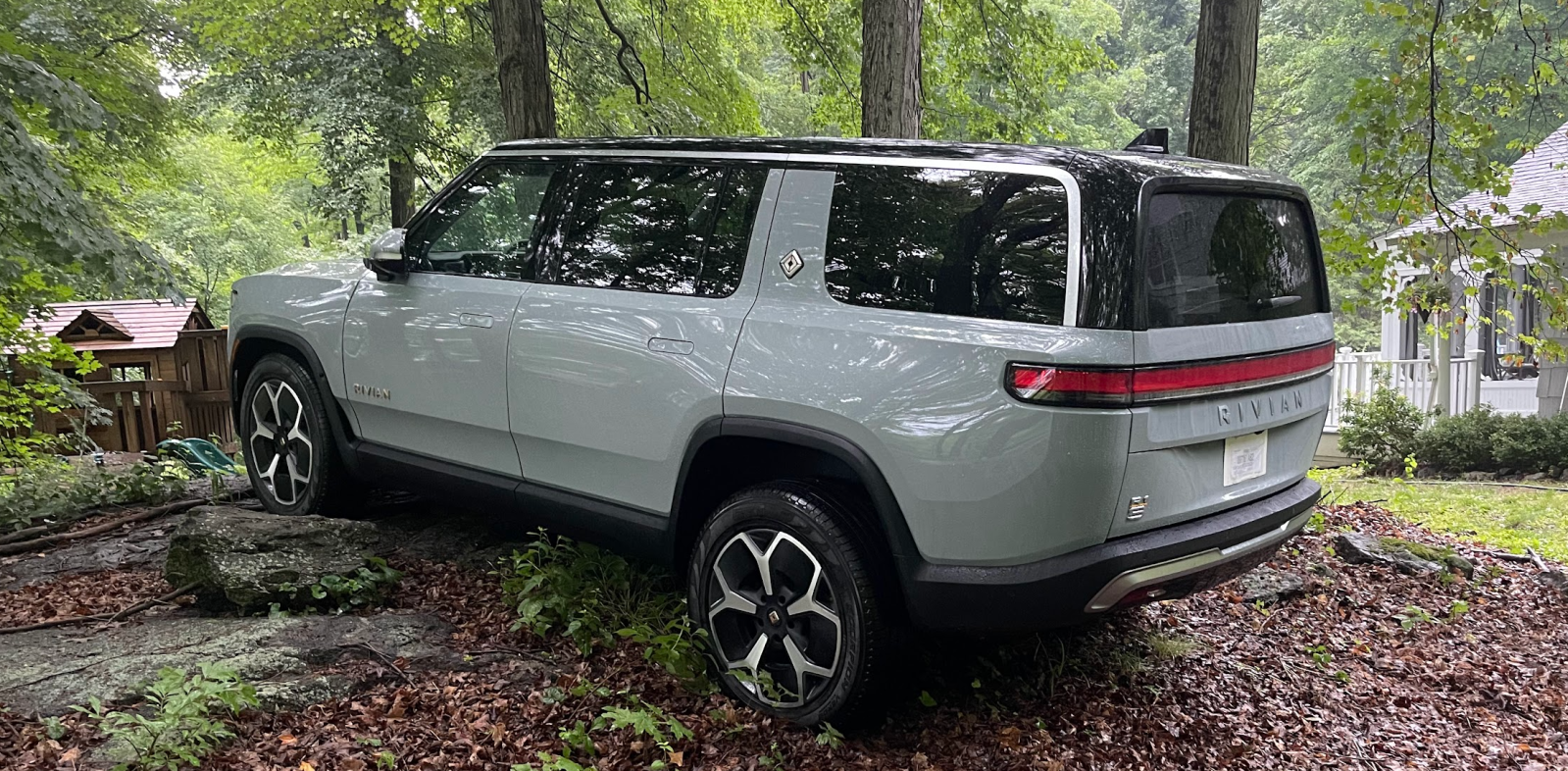The software Over-the-Air (OTA) fix has already been installed on 85%, and counting, of the affected 7800 early Rivian R1T and R1S vehicles. It will save the automaker from requiring owners to visit service centers or deploy mobile service units. At the same time, it will satisfy the NHTSA recall, though Rivian will offer owners a hardware replacement accelerator if desired.
In these early Rivian vehicles produced from June 10, 2021, to October 31st, 2022, in extreme heat, the certain accelerator pedal part would be activated to slowly move the vehicle forward much like an idling ICE vehicle. No accidents or injuries related to the problem have been reported and indeed many owners won’t be aware that the vehicle is not behaving correctly, especially if they are coming from an ICE vehicle that does this naturally.
Rivian laid out the following bullet points:
- The recall includes 7,873 R1T and R1S vehicles assembled in the Normal, IL plant between June 10, 2021, and October 31, 2022, with an early revision accelerator pedal that may not conform to performance specifications.
- When exposed to very high interior cabin temperatures, affected vehicles may not automatically go into auto-hold or park when the driver lifts their foot off the pedal. In extreme cases, the condition may cause the vehicle to creep forward very slowly, approximate to a similar ICE vehicle at idle.
- We were able to confirm the issue through our cloud telemetry data, and less than a week after identifying the issue, we developed and deployed an OTA software update to affected vehicles that eliminated the concern. We will also be replacing the accelerator pedal in affected vehicles at no cost to our customers.
- We are not aware of any accidents or injuries as a result of this issue.
I spoke to Wassym Bensaid, Rivian’s head of Software Engineering about the fix and he laid out how it came to Rivian’s attention – through a customer visit. Rivian then spent time isolating the issue with its fleet of vehicles and was able to identify the problematic part. Rivian then was able to build and test a fix, first locally then OTA on test vehicles.
He said the fix was building a software patch that recognizes the behavior and eliminates the acceleration. That fix has been deployed and currently almost all (85%) of affected vehicles were technically fixed before the NHTSA issued the warning this morning. Wassym noted that NHTSA worked with Rivian to make sure the fix satisfied the fix requirements.
Electrek’s Take:
This is a fantastic, and one of the most extreme examples of software fixing a hardware problem in the auto industry. If it weren’t for Rivian’s fully integrated software stack and OTA capabilities, something like this couldn’t even have been attempted. Owners would be forced to visit a service center and Rivian would have incurred a much greater cost.
Tesla, of course, has had a leadership role on OTA/full software stack ownership and has seemingly fixed NHTSA recalls monthly with software updates, including its Autopilot nag just a few weeks ago. This has led legacy automakers like Ford and GM to scramble to get their vehicles on board with these capabilities.
But it won’t be easy for Legacy Auto to catch up. Here’s Ford CEO talking about this problem (at the 25-minute mark) and how he’s had to re-invent the whole company to do so:
“They don’t talk to each other. So even though it says ‘Ford’ on the front, I have to go to Bosch and get permission to change their seat-control software.”
Ford CEO Jim Farley
FTC: We use income earning auto affiliate links. More.



